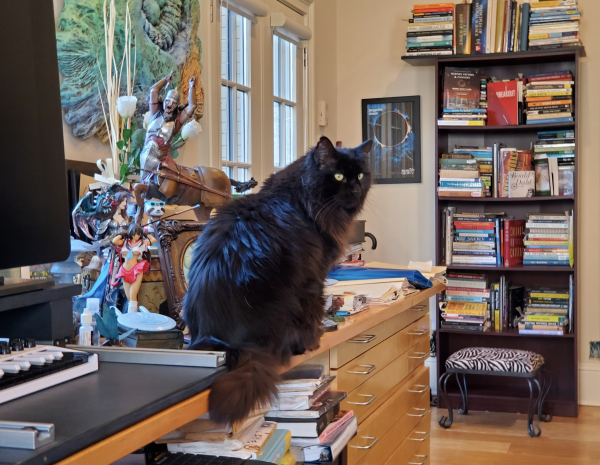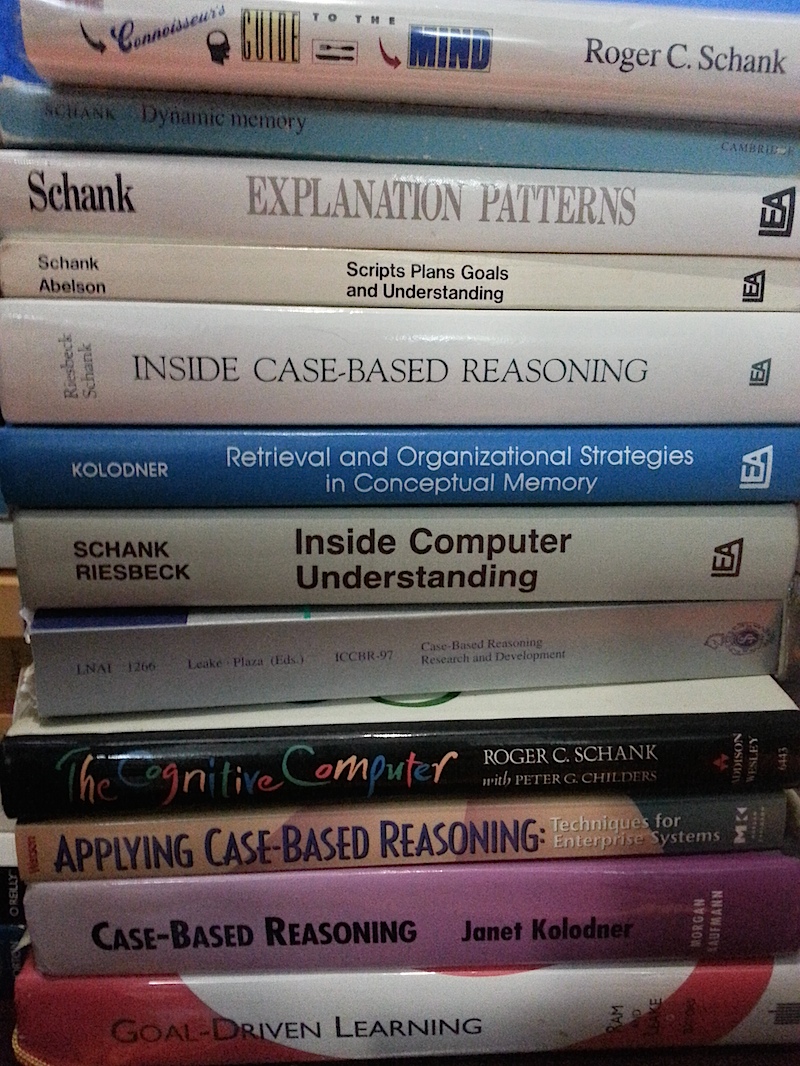
So I’ve developed a new tool for story analysis that my co-editor on The Neurodiversiverse, Liza Olmsted, called “your seven-part story test,” and it fits in one long sentence: “Who wants what, why can’t they get it, what do they do about it, how does it turn out, why does that matter to them, and what does that mean for the reader?”
This six-part test is an adaptation of Dwight Swain’s story question “Who wants what and why can’t they get it?” as well as Vorwald and Wolff’s pithier but less useful “What happens?”, called the Major Dramatic Question (MDQ) in their book “How to Tell a Story.”
Now, V&Q unpack their MDQ into the broader questions “What does my character want? What action do they take to get it? What keeps them from getting it? Who succeeds or fails?”. Like many writing coaches who have their own language for similar ideas, I think both Swain and V&W are tackling the “Major Dramatic Question”, just from different angles - but “how it turns out” is a key question not encapsulated in Swain’s version, and I think it helps us understand what is going on - or should be going on - in a story.
Ultimately, I think a story is an engaging and surprising case, in the case-based reasoning (CBR) sense. For those not familiar with CBR, it’s a reasoning technique back from the days of symbolic artificial intelligence (AI), pioneered by Janet Kolodner, the leader of the AI lab where I was trained (and my original thesis advisor). A case, in the traditional sense, is a labeled experience, which is marked by what problem is being solved, what solution was applied, how it turned out, what lesson it taught, and how we might remember it.
Well, in the age of content-addressable memories and vector databases, we worry less about labeling cases so we can remember them, as the content itself can help us find relevant cases. However, it remains important to analyze our experiences so we can better understand what happened, what we did, how it turned out, and what lessons that taught (or should have taught) us. And the last two are related, but different: what happened are the bare facts, but the same bare facts can have different meanings to different people that experience them - or to different observers, watching from the outside.
Think of a woman in an abusive marriage. What she wants is a peaceful life; why she can’t get it is a husband who’s a Navy SEAL with PTSD. Let’s say what she does about it is try to kill him, and how it turns out is that she gets away with it. But what does that matter to her, and what does that mean for us (the writer, the editor, the publisher, and the author)?
Well, that same outcome could matter in different ways. Perhaps our heroine gets to build a new happy life away from a man who abused her - or perhaps our heroine is now living a life of regret, with a child that resents her and feelings of guilt about killing a man who couldn’t cope with his wartime trauma and needed her help. Because the truth of it is, no-one should have to put up with domestic violence - but a small percentage of people who struggle with PTSD end up acting out, and need help to deal with their trauma.
There’s no right answer here - a skilled author could present a spectrum of situations in which most of us would say either “get them help” or “girl, get out”. But if the author shows our heroine murdering their husband and getting away with it, the story is implicitly endorsing murder as a solution for domestic problems. Conversely, if the author shows the heroine forgiving violence in an attempt to get the husband help, the story is implicitly endorsing women enduring domestic abuse. Not only is there no right answer here, there’s no good answer here - which might lead you as an author to question the whole setup.
That’s why it’s really important to step back and think about what you as an author are endorsing in your story - and whether you’re comfortable with that message. Despite what some writing teachers will tell you, you’re not the god of your story: you’re playing in a playground of your own making, but the materials from which that playground is fashioned - people, places, events, actions, reactions, and emotions - are all drawn from the very real world in which we live, and stories by their nature communicate messages about that real world to those who read them, even if the events in the story are purely fictional.
(This principle of authorial endorsement extends to the editor, publisher, and even the reader as well. There were many good stories submitted to The Neurodiversiverse that we chose to reject because of their implicit message - for example, we wanted our anthology to be empowering, so we didn’t select some powerful stories in which the character’s neurodiversity helped them communicate with aliens, but didn’t help the horrible situation that they were in; these stories might be a great choice for a horror anthology, however).
But the point can get lost if you start asking a lot of unconnected questions about your story. That’s why I like the idea of the unified MDQ, and I like the expression of that in Dwight Swain’s three-part question “Who wants what, and why can’t they get it?” But that three-part version is not enough, and expanding that question into a single phrase that incorporates the important elements of action, outcome, impact and meaning turns it into my seven-part test: “Who wants what, why can’t they get it, what do they do about it, how does it turn out, why does that matter to them, and what does that mean for the reader?”
The rewards for thinking through these questions are great. Thinking about how the story turns out matters to the protagonist creates options for tweaking the ending (or the material leading up to it) for greater resonance; and thinking about what meaning the story delivers for the reader creates opportunities to weave that message through the whole story. The seven-part story test can help us create stronger, more impactful, and more meaningful stories that make more sense and feel more satisfying.
So, to unpack the seven-part test further:
- Who? Who is the protagonist of your story?
- Wants what? What’s their goal, and why are they motivated to seek it?
- Why can’t they get it? What’s the conflict in the story? Is it derived from a classical antagonist, or is the conflict based on internal or environmental factors?
- What do they do about it? What action does the character take (or fail to take, as Hamlet fails to take action for much of his story)? Ultimately, most good stories are about what people do when facing conflict, so they should not be wholly passive - they should have some agency which affects how the story turns out.
- How does it turn out? With the exception of vignettes that are all atmosphere, we want to know the outcome of the protagonists’ action. Did they succeed? Did they fail? Are we left with a situation that’s definitively not resolved (as in the ambiguous endings of Inception, Cast/Away, The Sopranos, or John Carpenter’s The Thing)? Any of these are acceptable endings (though a definitive lack of resolution is the hardest trick to pull off) but you as the author need to pick one.
- Why does that matter to them? The ending of Cast/Away is a great example, in that our uncertainty about what the main character does next is actually symbolic of the main character’s situation. It matters to the main character that they are in a state of indecision, because that indecision represents what they lacked when cast away on that island: freedom of choice.
- What does that mean for the reader? Regardless of what you choose to the previous questions, you should think through the implications of what that means for the reader, and whether that’s the image you want to present for your story. While you aren’t the god of your story, you are the playwright and stage director, and if the message of your story isn’t what you want, you can just change it.
Overall, I’ve already got a lot of good mileage out of these questions in the new series of stories that I’m writing (which I’m variously calling “The Porsche Xenobiology Stories” or “Tales of Failaka” depending on which planet I’m writing on this week). By asking these questions, I’ve been able to reformulate my endings to focus not just on the outcomes of the character’s actions, but how it matters to them, which makes the endings more satisfying; and also to focus on what it means, which has enabled me to make the stories more cohesive, as well as inspiring ideas for new stories.
“Who wants what, why can’t they get it, what do they do about it, how does it turn out, why does it matter to them, and what does that mean for the reader?” It’s a short, seven-part story test, easily compressible into a sentence that can be used to interrogate your story, and it’s been very useful for me; I hope it is useful for you too.
-the Centaur
Pictured: Loki, and in the background, the reading "pile" for a writing book that I'm working on called "The Rules Disease." Yes, it has filled most of a bookshelf by this point - there's a lot of writing on writing.











